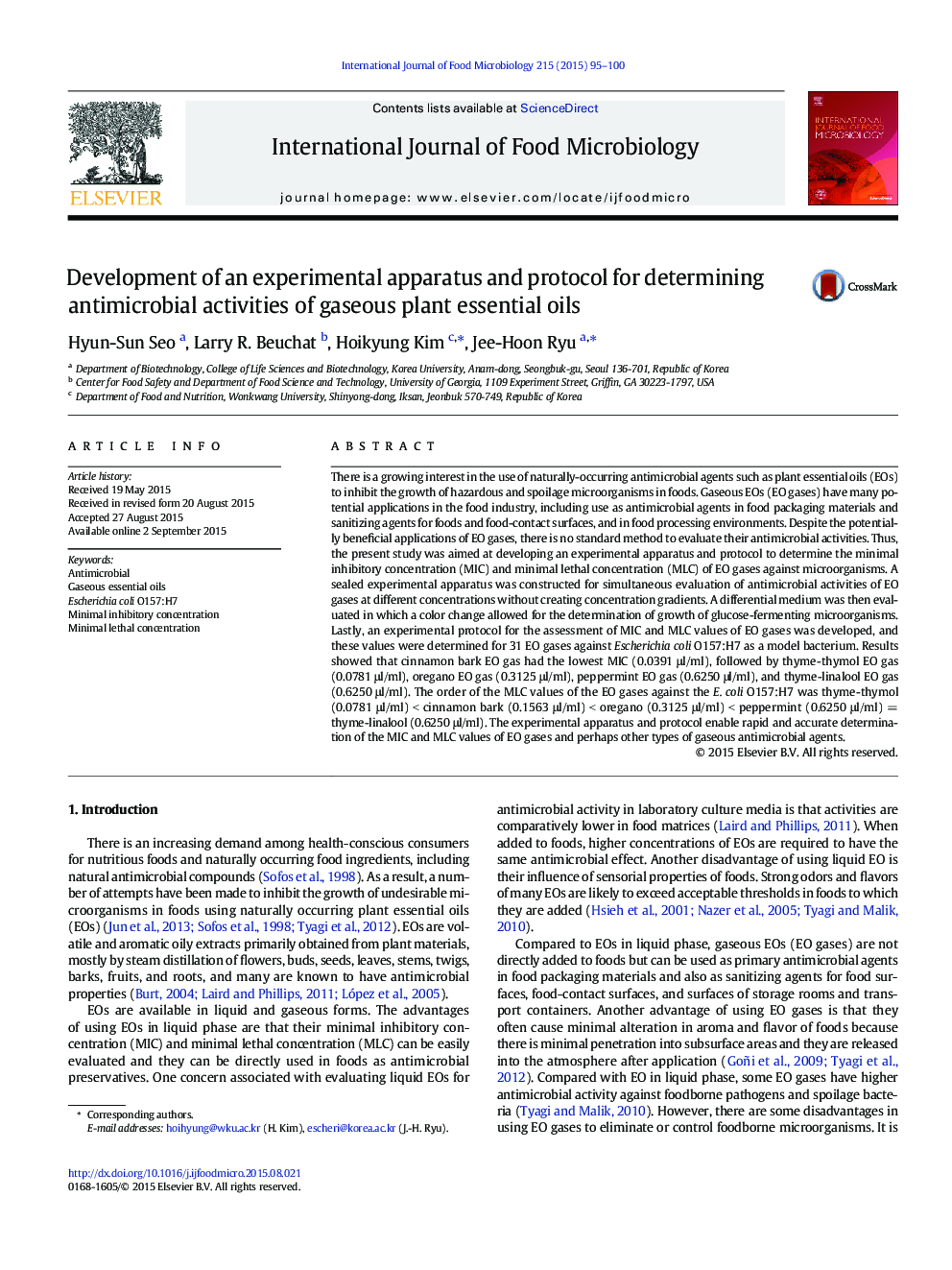| کد مقاله | کد نشریه | سال انتشار | مقاله انگلیسی | نسخه تمام متن |
|---|---|---|---|---|
| 6289831 | 1616568 | 2015 | 6 صفحه PDF | دانلود رایگان |
- Experimental apparatus to measure MIC/MLC of gaseous essential oils was developed.
- A medium for the determination of microbial growth in the apparatus was developed.
- Experimental protocol to measure MIC and MLC of essential oil gases was established.
- MIC and MLC values of 18 essential oil gases against E. coli O157:H7 were determined.
- Developed method may allow for a rapid and accurate measurement of MIC/MLC for gases.
There is a growing interest in the use of naturally-occurring antimicrobial agents such as plant essential oils (EOs) to inhibit the growth of hazardous and spoilage microorganisms in foods. Gaseous EOs (EO gases) have many potential applications in the food industry, including use as antimicrobial agents in food packaging materials and sanitizing agents for foods and food-contact surfaces, and in food processing environments. Despite the potentially beneficial applications of EO gases, there is no standard method to evaluate their antimicrobial activities. Thus, the present study was aimed at developing an experimental apparatus and protocol to determine the minimal inhibitory concentration (MIC) and minimal lethal concentration (MLC) of EO gases against microorganisms. A sealed experimental apparatus was constructed for simultaneous evaluation of antimicrobial activities of EO gases at different concentrations without creating concentration gradients. A differential medium was then evaluated in which a color change allowed for the determination of growth of glucose-fermenting microorganisms. Lastly, an experimental protocol for the assessment of MIC and MLC values of EO gases was developed, and these values were determined for 31 EO gases against Escherichia coli O157:H7 as a model bacterium. Results showed that cinnamon bark EO gas had the lowest MIC (0.0391 μl/ml), followed by thyme-thymol EO gas (0.0781 μl/ml), oregano EO gas (0.3125 μl/ml), peppermint EO gas (0.6250 μl/ml), and thyme-linalool EO gas (0.6250 μl/ml). The order of the MLC values of the EO gases against the E. coli O157:H7 was thyme-thymol (0.0781 μl/ml) < cinnamon bark (0.1563 μl/ml) < oregano (0.3125 μl/ml) < peppermint (0.6250 μl/ml) = thyme-linalool (0.6250 μl/ml). The experimental apparatus and protocol enable rapid and accurate determination of the MIC and MLC values of EO gases and perhaps other types of gaseous antimicrobial agents.
Journal: International Journal of Food Microbiology - Volume 215, 23 December 2015, Pages 95-100
